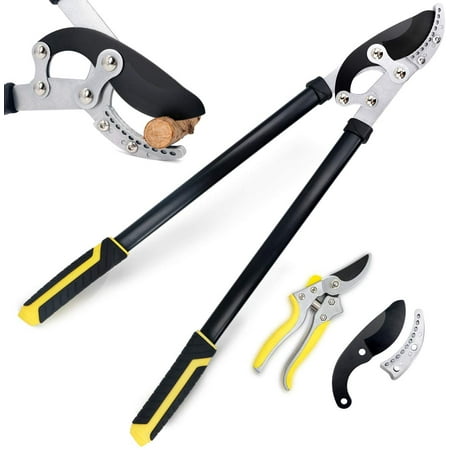When to harvest acorn squash – the 3 vital signs of fully-ripe fruit
Expert tips to be certain your acorn squash are ready to harvest, and how to pick them to ensure the longest storage life possible

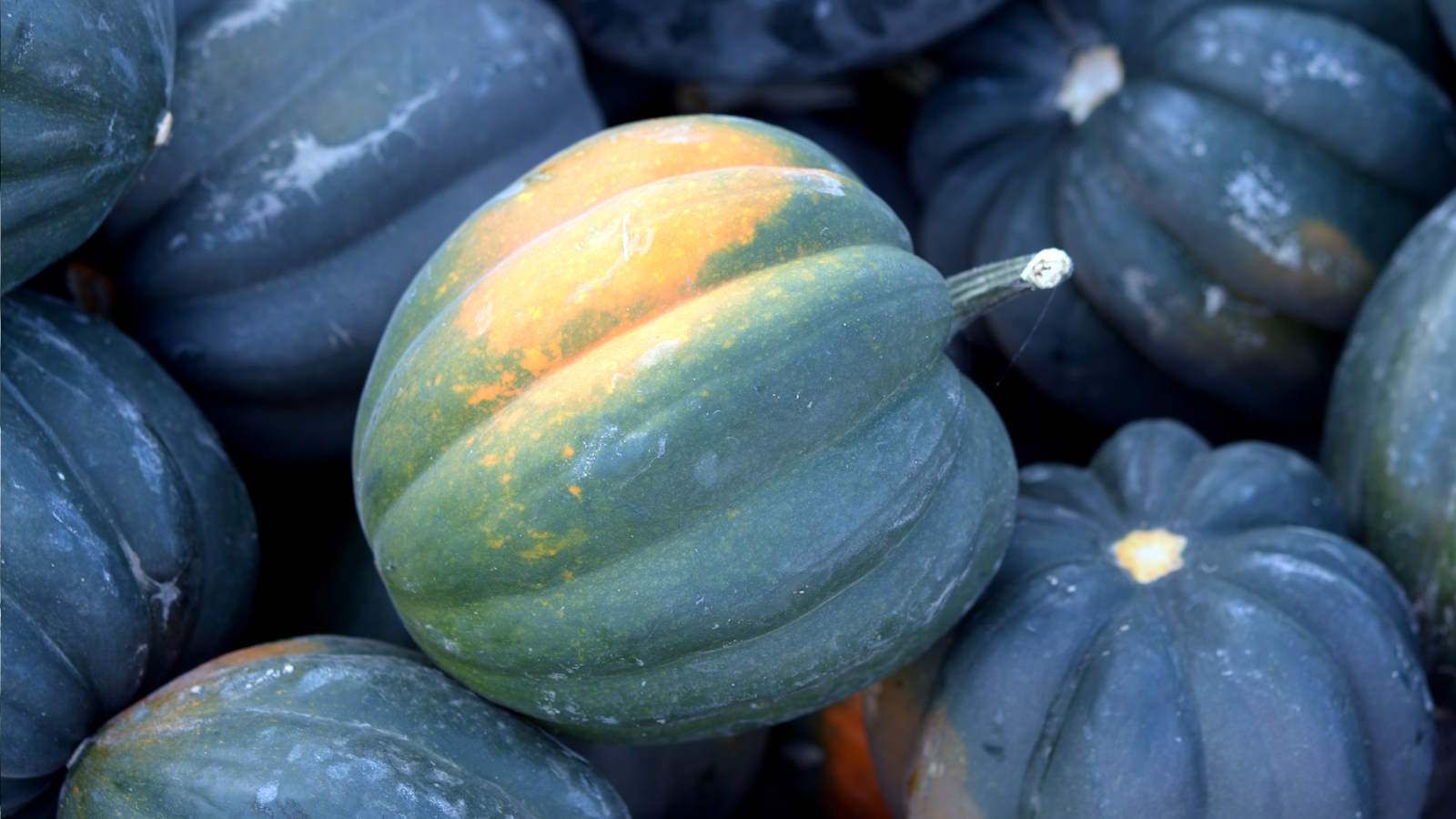
Acorn squash are a type of winter squash, which impacts their harvesting. It means you want the fruits to remain on the vines until they are fully ripe, so they can store for the longest time possible.
If you pick them too soon they will not store for as long. Likewise, if you leave them too long they can become overripe - which can impact the flavor and cause the flesh to be stringy. Thankfully, you can tell when to harvest acorn squash by the color of the fruit, the texture of the rind, and the stem.
I have sown, grown, and harvested many varieties of squash. I grew them as a professional kitchen gardener, both for restaurants and to sell to garden visitors, and they are a staple crop on my allotment. I have learnt a few tricks over the years, and have also spoken to two other growers to bring you expert tips for when and how to harvest acorn squash.
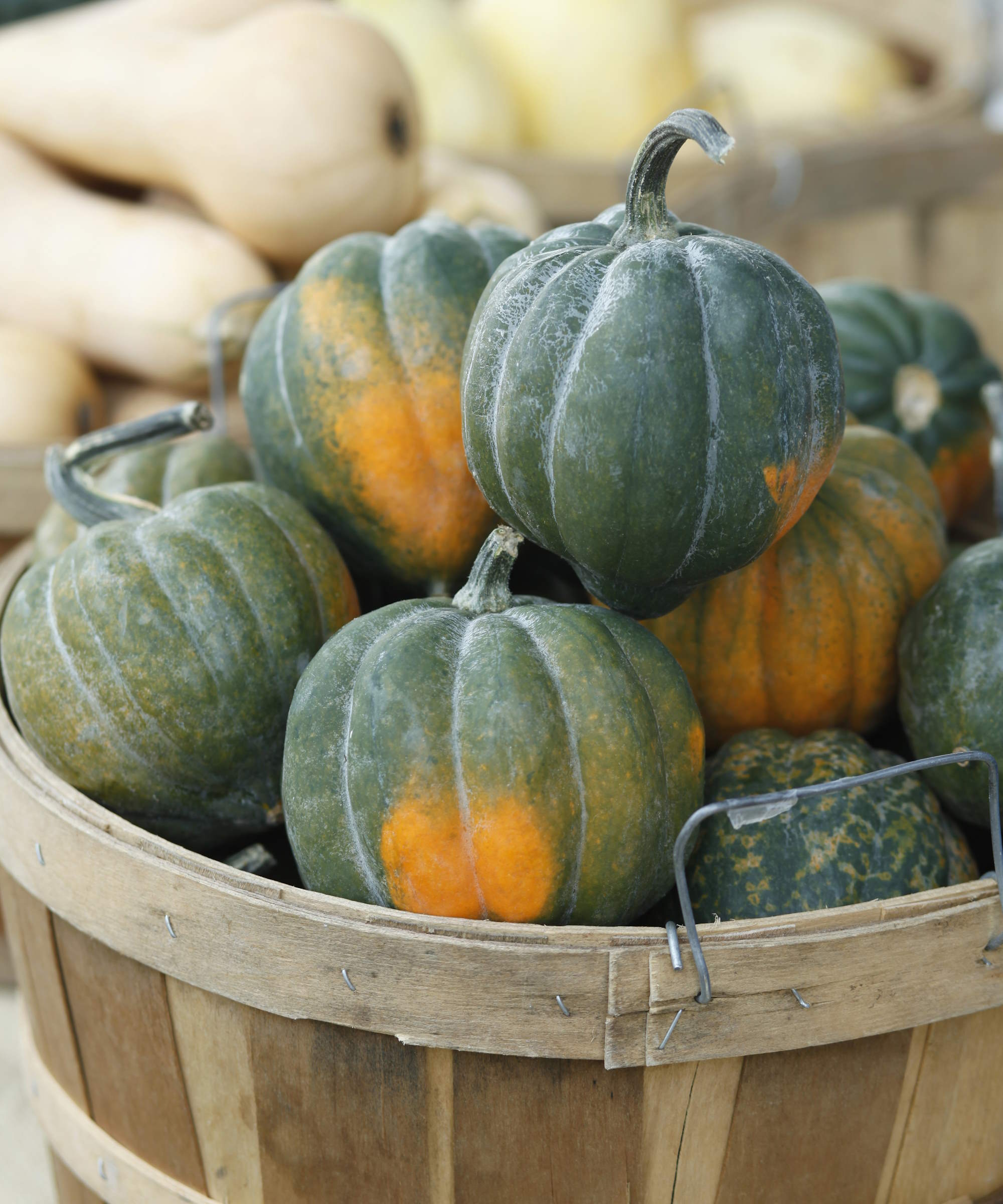
Acorn squash are short fruits that feature thick ridges - making them look like acorns
When are acorn squash ready to harvest?
The fruits of acorn squash are fully ripe between 80 and 100 days after transplanting the seedlings into the vegetable garden, whether you purchase young plants or sow seeds indoors to start your acorn squash off.
The exact time to reach maturity will depend on the type you are growing, so refer to the seed packet or look online to find the days to harvest for the particular type in your garden.
As well as using the predicted days to judge when ripe, other telltale signs will help you identify when acorn squash harvest time is.
When to harvest acorn squash - the signs of a ripe fruit
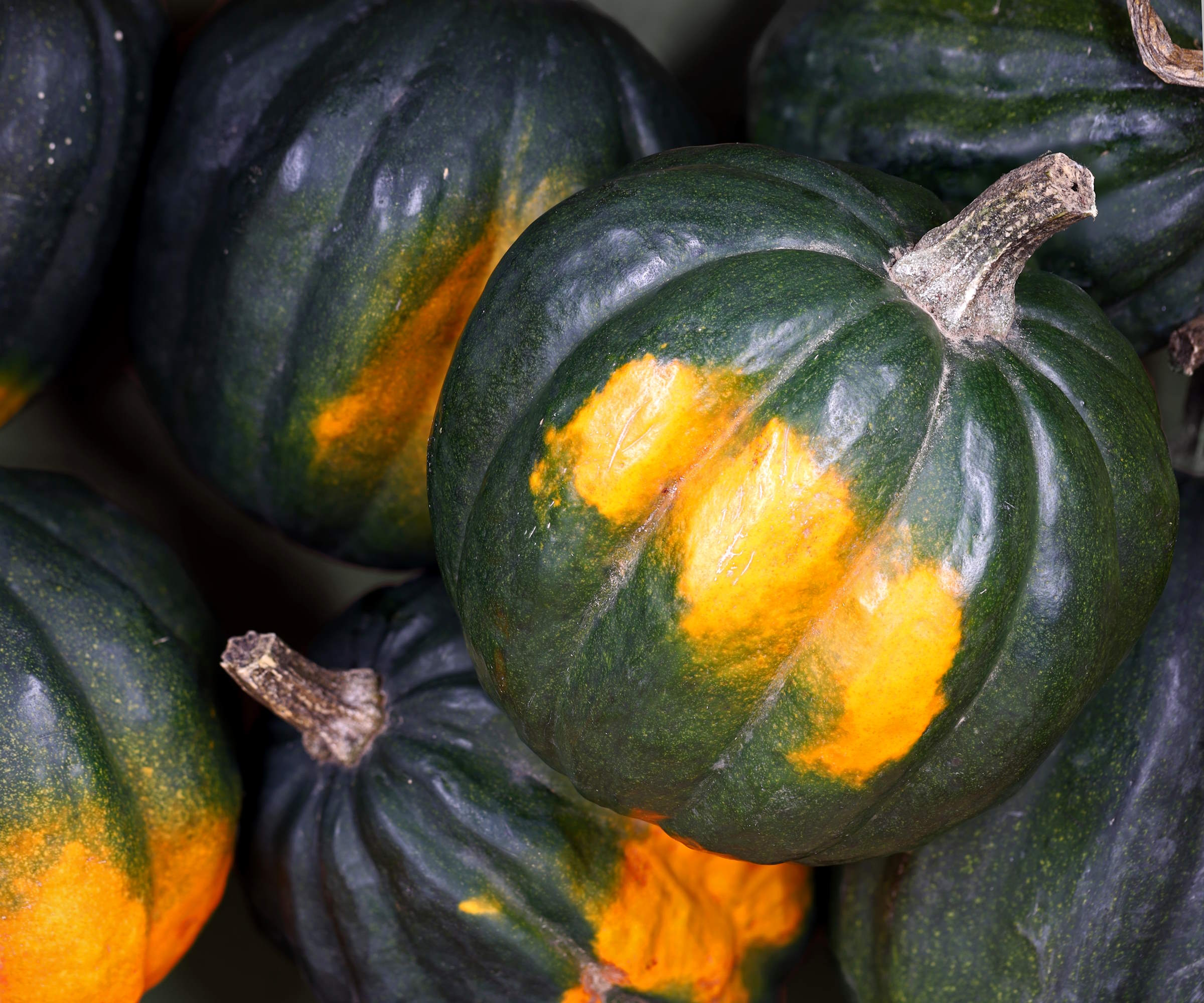
The color and firmness of the rind are key indicators of when to harvest acorn squash
Acorn squash are easy vegetables to grow and harvested between September and October. Three key signs will show the time has come to harvest acorn squash and that is the color, rind, and stem.
Design expertise in your inbox – from inspiring decorating ideas and beautiful celebrity homes to practical gardening advice and shopping round-ups.
The fruit itself tends to reach full size sometime before harvesting time. However, with winter squash the skin wants to be left to get tough before picking, to help it store for a long time - unlike summer squash harvested with thinner skins that have a much shorter storage life. This is the same for harvesting butternut squash or spaghetti squash, two other popular winter squash varieties.
The color and rind of the acorn squash are major signs the fruits are fully ripe. The fruits turn dark green when they mature and the spot that has contact with the ground wants to be a deep orange color. An acorn squash that has not developed its green color is underripe.
However, it should be noted that some acorn squash varieties are lighter in color and won’t turn dark green - though you do want to wait until the fruit has turned into its final intended color and you can also tell from the skin when it is ripe.
Rebecca Sears, a gardening expert at Ferry-Morse, says it would be a harvesting mistake to cut the fruit from the vine until it is fully ripe. She offers a useful and easy solution to tell from the rind when the squash is fully mature.
‘You can determine if your squash is ready for picking by trying to make a dent in the shell with your thumbnail. If you have a hard time doing so, you’ll know it’s time for picking,’ advises Rebecca.
The stem is the final factor that can show when the squash is ripe. When ready to harvest, the stem where the fruit is attached will be dry and shrivelled.
A crop of acorn squash may ripen at different times, however, you do want to harvest any winter squash before the frosts arrive. Frosts can damage the fruits and impair their storage life.

As CMO and resident green thumb for the Green Garden family of brands, Rebecca Sears nurtures the company's heritage but also looks to develop new products and solutions to help gardeners of all skill levels fuel their passion and become more successful in the garden. Rebecca has been gardening from coast to coast, first realizing her passion while living in Portland, Oregon, inspired by the public gardens throughout the city.
Top tips for how to harvest acorn squash
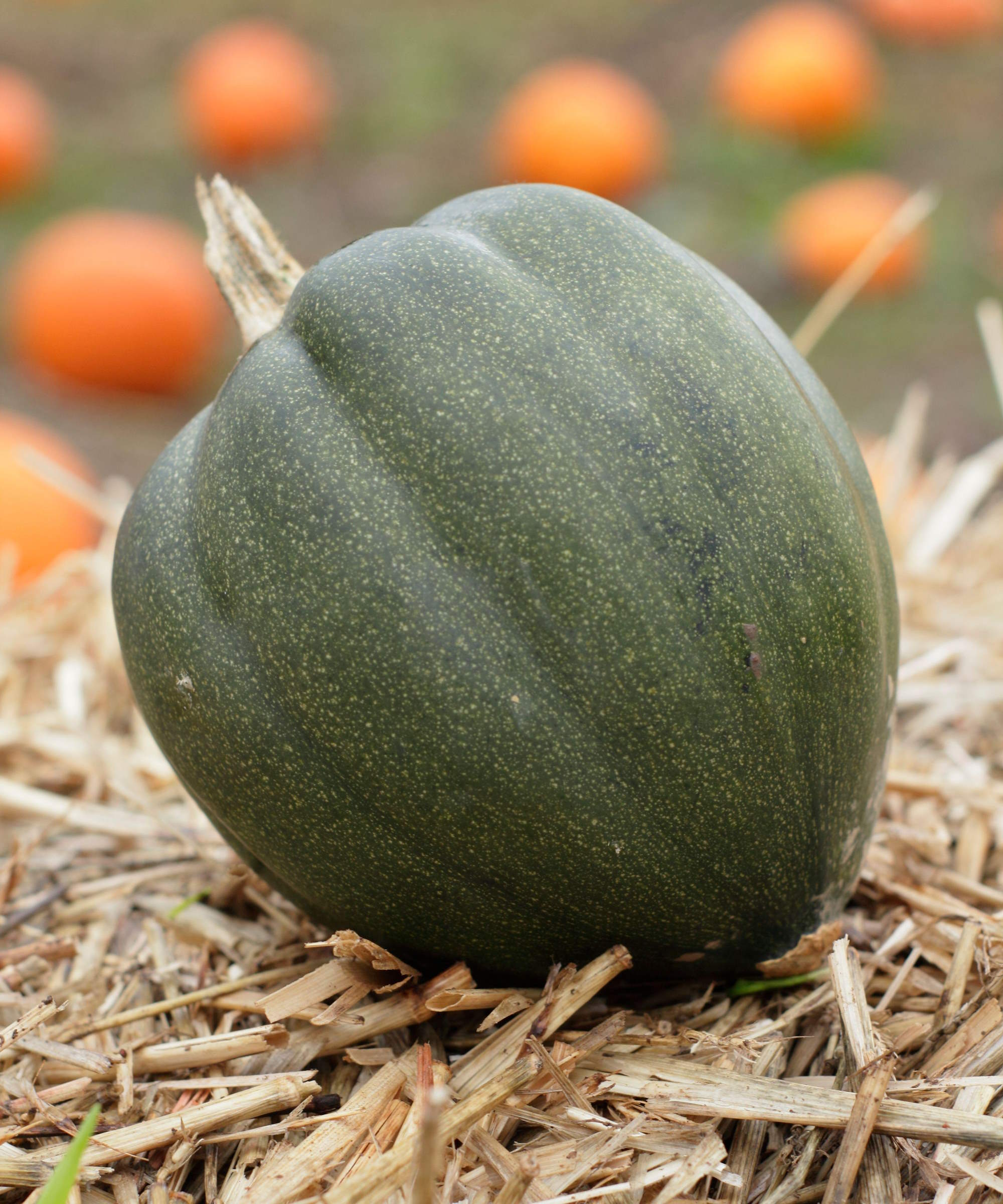
Acorn squash want to be harvested with a few inches of stem remaining
Use clean and sharp garden pruning shears or loppers to harvest acorn squash. Cutting the stem is always recommended, as ripping fruit from the vines can shorten its storage life. It also risks breaking stems and damaging fruits that are not yet ripe and need more time to develop on the plant.
Leave at least a couple of inches of stem attached to the squash, anything from 1-5 inches. Keeping a section of the stem attached helps keep moisture within the stem and fruit and aids storage. Always handle the squash carefully and do not try to lift or carry the fruit by this piece of stem, as it can easily snap off and damage the ripe fruits.
‘Allow the fruit to cure by setting it in a warm, dry place for 1-2 weeks,’ recommends Ashleigh Smith, managing editor at True Leaf Market. ‘This will help the skin to harden in preparation for storage.’
Curing squash improves the flavor and benefits storage. Cure the squash somewhere warm with good air circulation, this can be outside in the sun or a greenhouse or porch if wet weather is forecast. Check the fruits every couple of days for any blemishes and these fruits should be used soonest as they will not store for long.
After a few weeks of curing, acorn squash can be stored in a cool and dry area at temperatures of 50-55F for up to two months. They must be laid out in a single layer to store, never stacked on top of each other, and inspected regularly for any signs of rot that may spread.

Ashleigh Smith is the Managing Editor at True Leaf Market with a bachelor's degree in horticulture from Brigham Young University - Idaho. True Leaf Market is a nationally certified organic, non-GMO seed and horticultural company based in Salt Lake City, Utah.
FAQs
Can you eat acorn squash right after picking?
Acorn squash can be eaten straight after harvesting, however, it will lack some of the flavor and sweetness of a cured squash. This is because the sugar content of the fruits develops during the curing and storing process. Acorn squash which has not fully ripened can also be eaten, though the flavor and texture will differ from a ripe squash.
Can acorn squash be overripe?
If an acorn squash is too orange, it is overripe. A ripe acorn squash will be green and feature a small patch of orange, too much orange and the flesh of the squash is likely to be stringy and dry.
When should you throw out acorn squash?
You want to throw out squash when they have soft and mushy spots or shows signs of mold. This can be due to damage - either caused during harvesting or from any frosts - being stored in too warm conditions, or being stored for too long. The flesh will degrade the longer the acorn squash is stored and soft spots can occur. Regularly check for signs of degradation and throw out any affected squash.
Letting the fruits ripen fully on the vine is always key to success with winter squashes. Whether you are growing spaghetti squash, butternut squash, or acorn squash, resist the urge to pick sooner and let the fruits develop on the vine. Your reward is the most flavorful fruits that can be stored for the longest time possible.

Drew has worked as a writer since 2008 and was also a professional gardener for many years. As a trained horticulturist, he worked in prestigious historic gardens, including Hanbury Hall and the world-famous Hidcote Manor Garden. He also spent time as a specialist kitchen gardener at Soho Farmhouse and Netherby Hall, where he grew vegetables, fruit, herbs, and cut flowers for restaurants. Drew has written for numerous print and online publications and is an allotment holder and garden blogger. He is shortlisted for the Digital Gardening Writer of the Year at the 2025 Garden Media Guild Awards.
